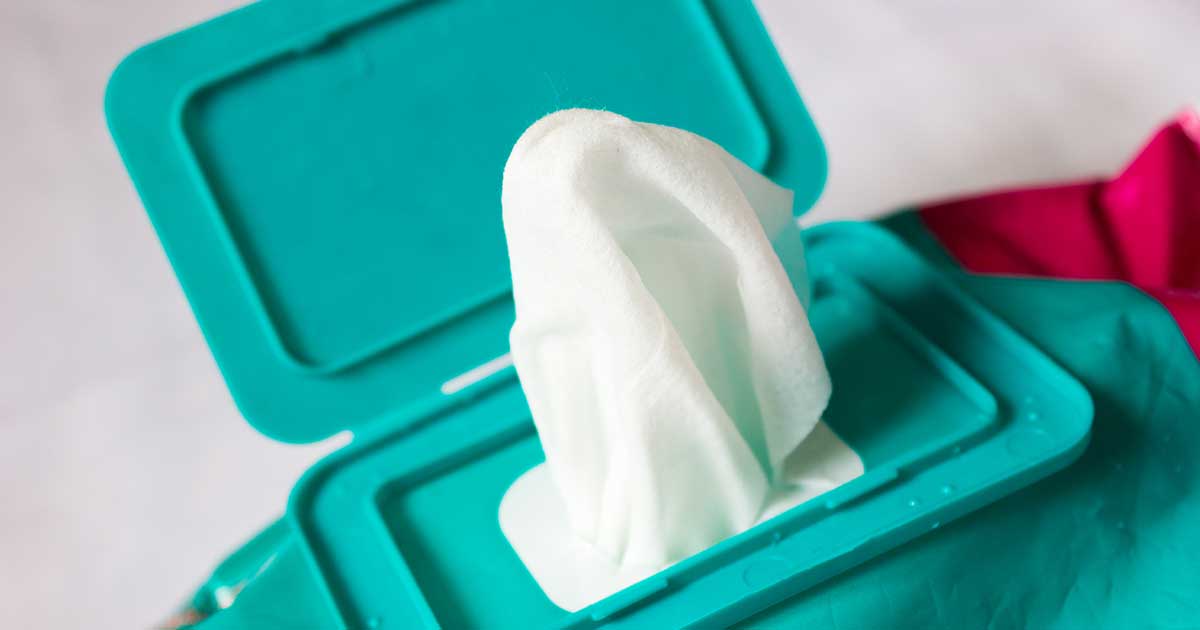True Cellular Formulas Team - April 4, 2023
Stop Touching your Receipts & Airplane Tickets
Why Going Paperless is the Solution

Although the itemized cost of your purchases may be helpful, you get more than that when you grab your receipt after a purchase. Receipts (and airplane tickets) are a cesspool of BPAs (and BPS!), containing up to a thousand times more BPAs than BPA-lined food containers. Today we get into the nitty-gritty of why you should go paperless and what you can do if you still need to keep receipts.
The Problem with BPAs
BPA stands for Bisphenol A, a chemical compound primarily used to manufacture various plastics. The chemical mimics human estrogen in the body and can disrupt the hormonal system, called the endocrine system. Studies link BPA to breast cancer, diabetes, and obesity, as well as hormone abnormalities in children.[1-3]
The impact is so severe on children’s development that the FDA has banned BPA plastics from all baby bottles and sippy cups, but unfortunately, this is not the case for other products on the shelves and in our life.[4]
The good news is although BPA is fat-soluble (meaning it can accumulate in fatty tissues), studies suggest that it tends to be rapidly metabolized, with elimination estimated to be virtually 100% within 24 hours of acute exposure.
The bad news is that since most people are exposed chronically, hormonal dysregulation also becomes chronic. One study found that more than 90 percent of Americans have some level of it in their urine![5]
As a result, many consumers are increasingly worried about food in BPA-containing packaging, and for a good reason. BPA can leach out of food or drink containers and into the food or beverages you consume and is commonly found in single-use plastic bottles, cellophane wrap, plastic shells, straws, the lining of most canned foods, and even plastic Tupperware. Since chronic exposure to BPA can lead to health concerns, mindfulness around this subject and avoiding exposure is vital.
The problem, however, is that food containers are not the only way BPAs get into our system. Many people avoid plastic containers like the plague but are still in contact with items that contain up to 1000x the BPAs in a food can.[6] The culprit? Receipts.
BPAs in Thermal Paper
Thermal paper is a recording media to be printed with heat from the thermal printer. The image is produced by heat instead of printing ink when the selected area of the thermal paper passes over the thermal print head. Thermal printing is done with small, compact printers that do not require maintenance. Thermal paper is widely used to print things like labels, tickets, POS receipts, and medical charts because it is convenient and reliable.[6] One of the biggest ways we get regular exposure to the dangers is through receipts.
Receipts are deeply embedded in modern culture to the point where most of us don’t think twice: we pay for something, the cashier hands us the receipt, and we take it. But, whether you keep your receipts or not, handling the thermal paper exposes your body to BPAs in a BIG way.
One might think that exposure via the hand doesn’t matter much, but science disagrees. Studies show that receipts can have up to 1000x more BPAs than canned food, which is especially dangerous because of how the substance is created.[7] In a can or bottle, the BPA is “bound” to other molecules that must break down for a person to absorb the chemical. Thermal receipt paper is covered with a film of powdery BPA, and this loose powder leaves a high concentration of the chemical on peoples’ fingers. It can further contaminate other substances that are handled, such as food, and penetrate the body's pores.[8]
To put it into context, Dr. John Warner of the Warner Babcock Institute for Green Chemistry explains, "There’s more BPA in a single thermal paper receipt than the total amount that would leach out from a polycarbonate water bottle used for many years.”[9]
Other things to avoid touching that use thermal printing include airplane tickets, shipping labels, printed barcodes, patient identification or visitor identification for wristbands in places like hospitals, and parking stubs or tickets.[10]
BPS Is Just as Toxic
In recent years, many manufacturers have shifted from using bisphenol A (BPA) to bisphenol S (BPS) in the production of thermal paper receipts, as concerns regarding the negative health impacts of BPA have grown. BPA, an endocrine-disrupting chemical, has been linked to various health problems, including hormonal imbalances and developmental issues. While the use of BPS in receipt paper has been hailed as a safer alternative, emerging research suggests that BPS also poses significant health risks.
As an endocrine disruptor, BPS has been found to interfere with the body's hormone systems, potentially leading to similar adverse health effects as BPA. BPS has been demonstrated to exhibit greater toxicity to the reproductive system compared to BPA, and it has been found to stimulate specific breast cancers hormonally at a similar rate as BPA. As a result, there is a compelling case for regulating BPS in a manner akin to the way BPA is regulated.[12]
-
Go Paperless
Going paperless whenever possible is optimal. Getting used to saying ‘no thank you’ when the cashier offers you the receipt can take some practice, but whenever you don’t need the receipt, refuse it. -
Ask to Have it Put it in the Bag.
You can ask them to put it in the bag so you can take it out later without touching it with your physical skin. Use a tissue or gloves, photograph it, and dispose of it. -
Bring a Small Pouch
If you like keeping your receipts, consider bringing a little pouch or folder and ask the cashier to put it in the pouch. Then, when you go over your receipts later, use gloves. -
Working with BPAs
If you work in an environment where you regularly touch receipts or BPA labels throughout the day, consider bringing up the toxicity with your employer. If they don’t consider replacing the printers with traditional ink printers, get yourself a pair of nitrile gloves to reduce your exposure.
Detoxing from BPAs
As aforementioned, BPAs make their way out of our bodies quickly from acute exposure. Research shows that BPA is mostly through urine and sweat. So ensure you are properly hydrated, and focus on sweat-inducing activities like exercise and sauna therapy.[13]
Since BPAs are fat-soluble, it is possible that chronic long-term exposure could result in storing some toxins in your body’s fat cells. One great way to help safely excrete such toxins from your body is using a high-quality liposomal zeolite clinoptilolite with fulvates. CytoDetox®, is a potent zeolite that can support the safe removal of environmental toxins like heavy metals, chemicals, pesticides, and biotoxins at the cellular level, safely and 100% naturally.[14]
Summary
Thermal printing uses a powdered BPA with up to 1000x the exposure compared to a BPA-lined food can. Avoiding receipts, other labels, and tickets printed on thermal paper is vital to avoid the endocrine-disrupting properties of BPAs. Besides avoiding exposure, excrete BPAs through sweat and urine through exercise, sauna, and proper hydration. For long-term exposure, consider a high-quality liposomal zeolite clinoptilolite to help the body detoxify.
- Researchers Examine BPA and Breast Cancer Link -- ScienceDaily. www.sciencedaily.com/releases/2011/10/111018214107.htm.
- Peeples, Lynne. “A Hormonal Mess: How an Everyday Chemical May Be Making Us Fat and Sick.” The Huffington Post, TheHuffingtonPost.com, 16 Feb. 2012, www.huffingtonpost.com/2012/02/14/bpa-chemical-hormone-obesity-diabetes_n_1276996.html.
- Blue, Laura. “More Health Harms for Children Exposed to BPA.” Time, Time, 9 Jan. 2013, healthland.time.com/2013/01/09/more-health-harms-for-children-exposed-to-bpa/.
- Tavernise, Sabrina. “F.D.A. Makes It Official: BPA Can't Be Used in Baby Bottles and Cups.” The New York Times, The New York Times, 17 July 2012, www.nytimes.com/2012/07/18/science/fda-bans-bpa-from-baby-bottles-and-sippy-cups.html.
- Tillett, Tanya. “Bisphenol A, chapter 2: new data shed light on exposure, potential bioaccumulation.” Environmental health perspectives vol. 117,5 (2009): A210. doi:10.1289/ehp.117-a210b
- “BPA and BPS in Thermal Paper.” Minnesota Pollution Control Agency, www.pca.state.mn.us/business-with-us/bpa-and-bps-in-thermal-paper.
- “Turning up the Heat on Thermal Paper Receipts.” Office for Science and Society, 28 Feb. 2020, www.mcgill.ca/oss/article/health/turning-heat-thermal-paper-receipts.
- “Thermal Paper Technology - What Is Thermal Paper?” Jujo Thermal, www.jujothermal.com/technical-guide/thermal-paper-technology/.
- “Is BPA on Thermal Paper a Health Risk?” Plastic Pollution Coalition, 1 July 2022, www.plasticpollutioncoalition.org/blog/2016/12/23/is-bpa-on-thermal-paper-a-health-hazard.
- “Direct Thermal Printer or Thermal Transfer Printer.” AB&R, 6 May 2021, www.abr.com/direct-thermal-printer-thermal-transfer-printer/.
- Ecology Center. "Receipt Deceit: Toxic Chemicals in Receipt Paper - Test Results." Ecology Center, 2023, https://www.ecocenter.org/our-work/healthy-stuff-lab/reports/receipt-deceit-toxic-chemicals-receipt-paper/test-results.
- Thoene, Michael et al. “Bisphenol S in Food Causes Hormonal and Obesogenic Effects Comparable to or Worse than Bisphenol A: A Literature Review.” Nutrients vol. 12,2 532. 19 Feb. 2020, doi:10.3390/nu12020532
- Genuis, Stephen J et al. “Human excretion of bisphenol A: blood, urine, and sweat (BUS) study.” Journal of environmental and public health vol. 2012 (2012): 185731. doi:10.1155/2012/185731
- Mastinu, Andrea et al. “Zeolite Clinoptilolite: Therapeutic Virtues of an Ancient Mineral.” Molecules (Basel, Switzerland) vol. 24,8 1517. 17 Apr. 2019, doi:10.3390/molecules24081517



